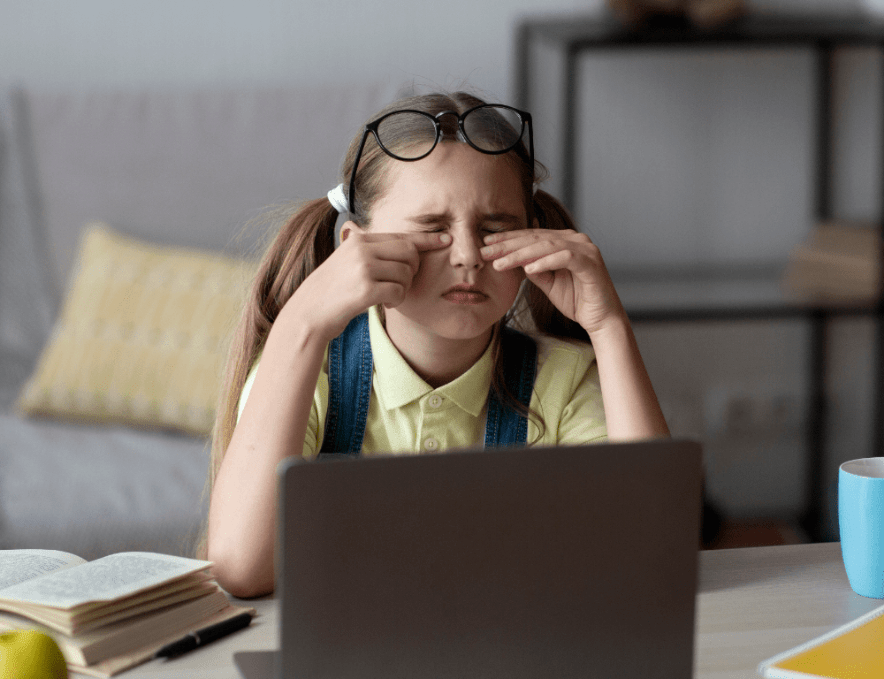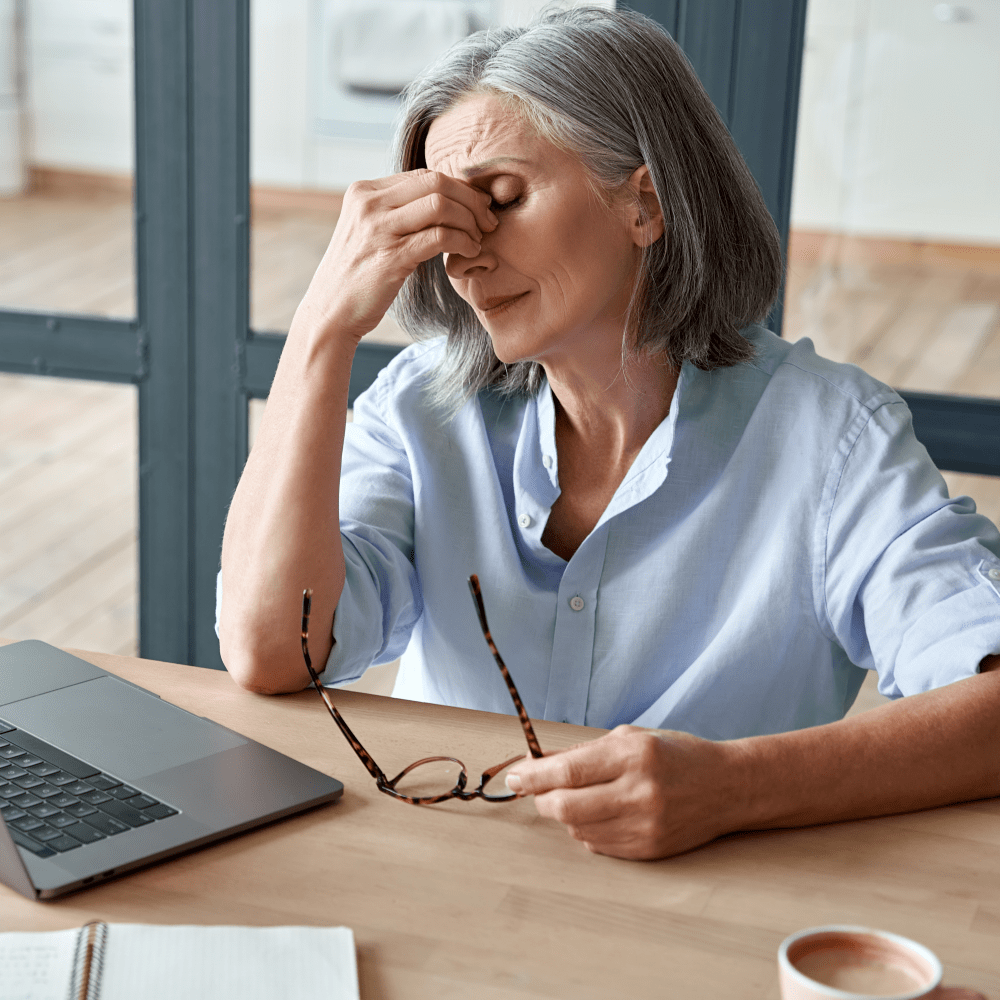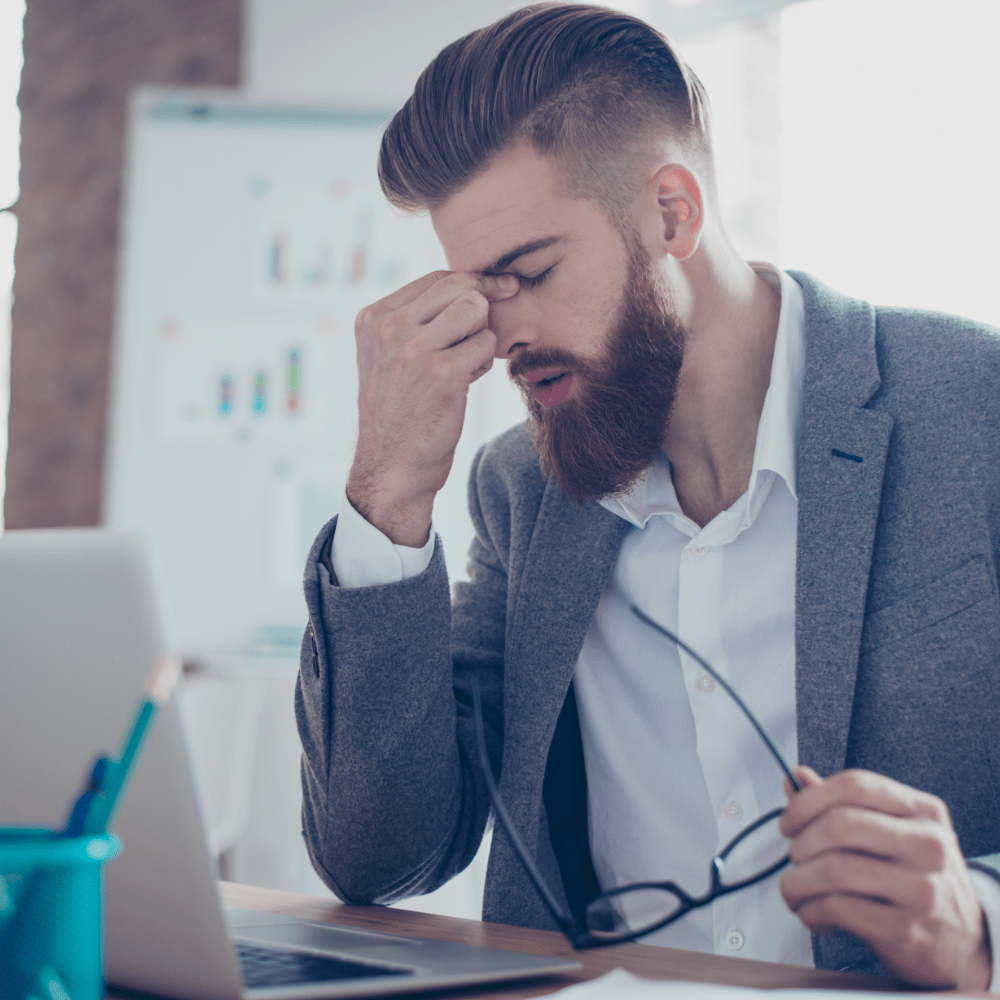Dry Eye Treatments
Dry Eye
Dry eye disease is a common and often chronic problem that affects approximately 10 million Americans, yet many people don’t even realize they have it. People with dry eyes either do not produce enough tears or their tears are of poor quality. This results in unpleasant symptoms including itching, burning, redness, watery eyes, excessive tearing and even eye pain.
The most common cause of dry eye disease is due to Meibomian gland dysfunction (MGD.) These Meibomian glands make oil called meibum. Meibum, water and mucus form the three layers of tear film, the fluid that keeps your eyes moist. The meibum helps prevent the water layer, on the eye surface, from evaporating or drying out too quickly. Meibomian Gland Dysfunction occurs when the meibomian glands fail to provide enough meibum.
Many substances and situations can cause dry eyes, such as the medication you’re taking, the time spent staring at your phone or computer without blinking, exposure to smoke or dry air, wearing contact lenses, auto-immune disorders or aging. No matter the cause, there are treatments that can help alleviate your discomfort.


What causes MGD?
Excessive screen time has been linked to the development of MGD. Staring at a screen on your TV, smartphone, computer or tablet, causes you to blink less frequently. Blinking plays a critical role in maintaining tear film stability and a chronic reduction in blinking can result in Meibomian gland obstruction and atrophy. Less frequent blinking results in dryer eyes, which can harm the long-term ability of your Meibomian glands to function properly.
Additional factors can also include:
- Age: there a higher prevalence in those over 50 years of age
- Gender: the majority of dry eye sufferers are women
- Environment: dry wind, dry air and dry climates can evaporate the tears
- Medication: these include antidepressants, decongestants and blood pressure medication
- Wearing contact lenses for an extended period of time
- Auto-immune disorders: Sjogren’s disease, rosacea and arthritis, among others
At Eyes in the ‘Burg we will tailor a treatment plan based on the stage of your MGD as well as any underlying medical condition you have.
What are the symptoms of dry eye disease and Meibomian gland dysfunction?
- Blurry Vision
- Burning and/or dry sensation
- Difficulty wearing contact lenses
- Watery eyes
- Red, sore and gritty feeling eyes
- Crusty or sticky eyelids
Is there a cure for dry eye disease?
Unfortunately, there is no permanent cure for dry eye syndrome. However, there are a number of effective ways to prevent the symptoms. Make an appointment today with our office for an evaluation and personalized treatment options.
How do I prevent dry eye symptoms?
Many factors including allergies, hormones and the weather can cause dry eye symptoms such as dry, red, itchy and gritty-feeling eyes. Tips to prevent these symptoms include:
- Eating foods high in omega-3 fatty acids, which help produce oils in your tears that slow evaporation
- Following the “20-20-20 rule” when working on computers or screens. This means looking away from the screen every 20 minutes, for 20 seconds, at something at least 20 feet away, to give your eyes a break from the strain of working on digital screens.
- Position air vents, fans and heaters so that they don’t blow directly into your eyes, drying them out.
Can dry eye disease cause blindness?
Home Treatments

Vitamins and Foods that relieve dry eye syndrome
Studies have shown that certain foods help the eyes stay properly hydrated. Specific vitamins, fatty acids and trace elements are good not only for our overall health but also for our tear film. Research on vitamins and supplements impacting the symptoms of dry eye syndrome is evolving and continuing to expand. The nutrients needed for eye health may already be prevalent in your diet, so always discuss the addition of vitamins and supplements with your doctor before beginning to take them.
That said, there are a variety of vitamins that are being explored in relation to dry eye syndrome. Omega-3 fatty acids are responsible for forming the stabilizing layer in the tear film. If this outer layer of the lubricating film is disrupted, it can lead to dry eye symptoms like burning, redness and itchiness. In addition, omega fatty acids have an anti-inflammatory effect. Foods rich in Omega fatty acids include fish, nuts, seeds and plant oils.
Lutein and zeaxanthin are antioxidants that help cells function correctly and stay healthy. They help prevent many chronic eye diseases include DES. Foods rich in these antioxidants include leafy greens like romaine lettuce, kale and spinach. They are also available as supplements.
Vitamin A is an essential nutrient to eye health and can be found in carrots, spinach, tomatoes and other orange or yellow fruits and vegetables. B12 assists in repairing and preserving the corneal nerve layer which impacts the burning sensation often experienced with dry eye.
Vitamin D deficiency has been associated with poor tear quality. Supplemental vitamin D may reduce inflammation in the eye and improve the eye’s ability to lubricate itself. Finally, drink plenty of water. While it may seem obvious, many of us forget to drink enough water. Staying hydrated can help improve eye comfort and is vital for your kidneys, bowels and skin.
Hot Compresses for Dry Eye
If you are suffering from mild to moderate dry eye symptoms, such as itchy and gritty eyes, this low tech solution may be just what you need. Hot compress eye masks are easy to use and a natural way to treat blepharitis, Meibomian gland dysfunction, and specifically—chronic dry eye disease.
A hydrating hot compress mask contains special beads that continuously absorb and store water molecules from the air. When the mask is warmed up in the microwave, the clean, natural moist heat immediately begins to provide soothing relief for your eyes. A heated eye mask helps stabilize the tear film, improves oil gland function, and slows tear evaporation. After using the mask, your hydrated and lubricated eyes will be able to expel bacteria and debris more efficiently so your eyes feel refreshed and rejuvenated. The heat from the mask also helps unblock Meibomian glands and produce more tears
Eyelid Hygiene
We all know the importance of brushing our teeth. Even under the worst circumstances, it’s generally easier to replace teeth than eyes. But how many of us perform daily lid hygiene?
Our eyelids constantly produce oil, water, and other buildups, and microbes love to make this area home. If the eyelids and eyelashes are not properly cared for, Meibomian gland dysfunction can arise and the symptoms of Dry Eye Disease can appear or drastically worsen. For that reason, proper lid hygiene is essential in treating dry eye disease. There are many over-the-counter cleansers; however, most do not have the strength to combat the types of bacteria and mites that can infest your eyelids and lashes.
First off, start cleaning your lids at least daily using a cleanser specifically formulated for your eyes. The cleaning should be directed at the lash line near the lid margin. Washing your face helps and is better than nothing, but it is not a replacement for daily lid cleaning. Gently scrub the lash line by using horizontal motions across the closed eyelids. Don’t be too aggressive with scrubbing by pushing down hard on the lid or moving so quickly across that you can light a fire. Our eyes only need 30-40 seconds of daily lid hygiene to see and feel better!
Eye Drops for Dry Eyes
Effectively managing a health condition like dry eye syndrome requires a thorough diagnostic and treatment process. Knowing exactly what’s causing your symptoms and how to treat the condition at its source is the only way to attain long-lasting relief. At Eyes in the ‘Burg, we do more than just treat the symptoms – we determine the underlying cause of your DES and get to the root of the issue.
Given how uncomfortable dry eye symptoms can be, it’s no surprise that dry eye sufferers seek relief using over-the-counter drops. People with DES may not realize that they should visit their eye doctor rather than seek solutions on their own. But not all eye drops are created equal. People with mild to moderate cases of DES who seek relief from OTC solutions may be choosing the wrong types of drops or dosage for their eyes. Masking a mild case of DES by using redness-reducing eye drops won’t address the underlying source of the redness. In fact, these eye drops have been shown to exacerbate symptoms in the long run.
Experiencing continual eye irritation indicates the need for professional eye care. An optometrist will isolate the cause of your DES and use their expertise to find the most effective treatment for lasting relief. Even if you have a mild case of dry eye syndrome, now is the perfect time to start treatment, before symptoms worsen. If you’ve sought help in the past but were told nothing else could be done to treat your eye condition, speak with Dr. Sandra Grossett regarding the latest and most effective dry eye treatments.
If you’re ready to end the cycle of getting over-the-counter eye drops without lasting relief, contact our office for a dry eye evaluation.



IPL (Intense Pulsed Light) Therapy
IPL Therapy, which has been traditionally used as a cosmetic procedure for treating facial skin conditions, effectively treats chronic dry eye and Meibomian Gland Dysfunction (MGD). In fact, IPL Therapy is among the more groundbreaking treatments for dry eye. IPL Therapy delivers pulses of light to liquefy and release oils that have hardened and clogged the Meibomian glands in the eyelids. IPL also reduces eyelid redness and stimulates healthy gland function.
Many of the treatments for dry eye syndrome, such as eye drops, artificial tears, hot compresses and eyelid scrubs are meant to temporarily relieve symptoms instead of treating the root cause of the condition. IPL is unique in that it targets the source – the blood vessels surrounding the glands – enabling them to secrete oils naturally and resume their moisturizing function. This not only relieves symptoms, but also slows the progression of chronic dry eye.
Does IPL Hurt:
The majority of patients tolerate the treatment well. It can feel like a slight snapping of a rubber band on the skin.
Before Your IPL Treatment:
- Avoid extended sun exposure for 3-4 weeks prior to treatment, including tanning beds and tanning lotions.
- Discontinue any products containing Retina-A, retinol, benzoyl peroxide, glycolic/salicylic acids, astringents or Vitamin C for one week prior and one week after treatment.
- Notify us if anything changes with your health history or medications prior to each session.
The Day Of Your Appointment:
- Please arrive with a clean face, no creams or make-up on the treatment area.
- Allow 30-45 minutes for your appointment.
- Eyeshields and protective goggles will be placed over your eyes and coupling gel will be applied to your face.
- Your eyes will be protected, but you will see a bright flash with each pulse.
After your IPL Treatment:
- Your skin may be sensitive after treatment.
- Your skin may feel like it has s light sunburn for a few hours after treatment. It is ok to apply aloe vera or Aquaphor.
- Sun spots and age spots may darken and pigmented areas may crust and begin to flake after a few days.
- Do not pick, rub, scrub or exfoliate while healing.
- It is crucial to avoid any sun exposure for the first 48 hours post-treatment. Avoid tanning as much as possible as this may enhance melanin regeneration, resulting in unwanted hyperpigmentation.
- Apply sunblock with SPF30 or higher daily. Avoid extended sun exposure and wear a hat and sunglasses when outside. Try to keep the treatment area out of the sun as much as possible for at least 4 weeks post-treatment.
LLLT (Low Level Light Therapy)
LLLT is a non-invasive therapy that uses light energy and heat to help stimulate tear production and improve the health of the cells lining the inside of the eyelids. The main medical applications of LLLT are reducing pain and inflammation, augmenting tissue repair and promoting regeneration of different tissues and nerves.
Low Level Light Therapy is a safe and effective way to treat dry eye symptoms with few if any side effects. In addition to treating dry eye, LLLT may also decrease the appearance of facial wrinkles, acne, and rosacea. Each treatment session lasts approximately 15 minutes. During a typical treatment session, you will sit or recline in a comfortable position, you will place special protective goggles over your eyes and a special LED panel with be placed in front of you. The panel will emit low-level light energy onto your face. The light energy will penetrate the tissue and stimulate the cells to produce more tears. Most patients report feeling a sense of warmth during the procedure, but there is not pain or discomfort associated with LLLT.
TearCare
TearCare is an in-office procedure used to treat Meibomian gland disorders. Treatment begins with an applicator being applied to the outer edges of the upper and lower eyelids for 15 mintues. A constant, therapeutic heat will be applied through the applicators, which, combined with blinking, will help to unclog the glands. As part of your treatment, Dr. Grossett will express the Meibomian glands to help remove blockages that can stimulate oil production, resulting in a healthier tear film and reduction of dry eye symptoms.
Microblepheroexfoliation (MBE)
Microblepheroexfoliation is a safe, painless and fast way to effectively clean and exfoliate your eyelids and lashes. BlephEx is an instrument that has a tiny rotating, disposable, medical grade micro-sponge to physically scrub the edge of the eyelids and eyelashes, removing the biofilm and exfoliating the eyelids. The patented micro-sponge is disposable and a clean one is used for each individual eye so bacteria is not spread between the lids. This procedure takes about 10-15 minutes and is well tolerated. Most patients report a tickling sensation.
